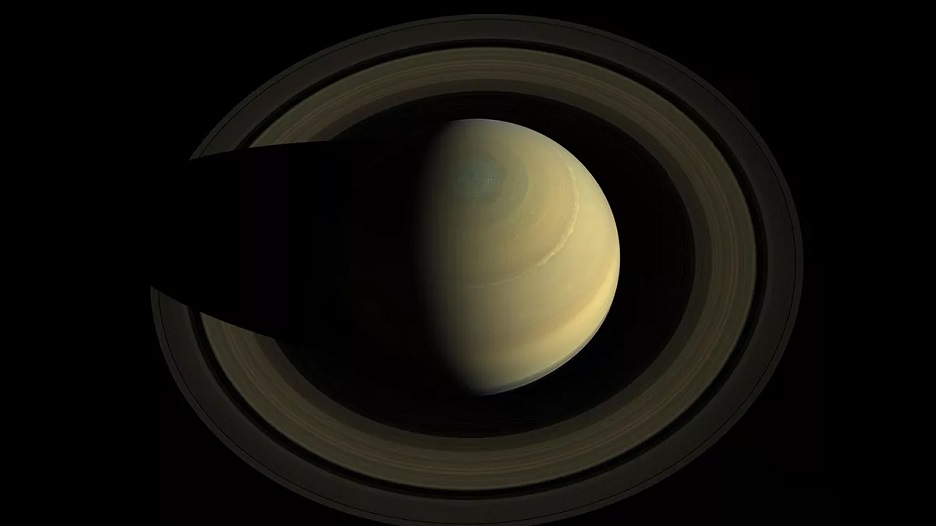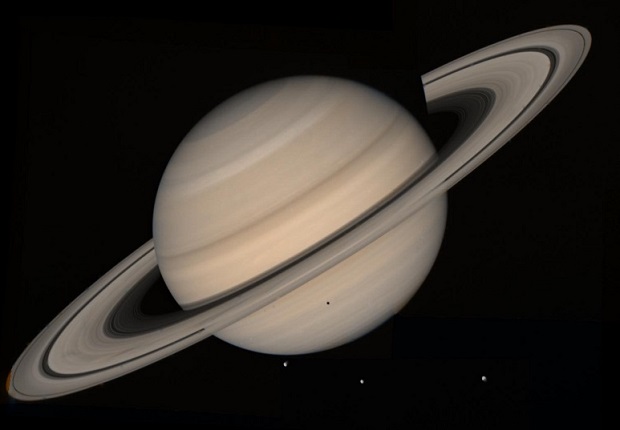
What do Saturn's rings look like and where do they come from?
The rings of Saturn can safely be included in the list of the most mysterious objects in the solar system. Their origin is still a mystery to scientists, and they look something like this:

Of course, this is not a real photo of the sixth planet in our system, but a composite: It was created by scientists at the Southwest Research Institute (SwRI) based on 41 photos from NASA's Cassini mission, which crashed into Saturn's atmosphere in 2017. This image was recently published in the journal Icarus.
To this day, scientists are still studying the data from that mission: even after 13 years of Cassini observations of the Saturn system, astronomers still know very little about the origin of the planet's famous rings.
Some experts argue that Saturn's rings are very old and that they appeared around the same time as the planet itself. But back in the early 1980s, Peter Goldreich of the California Institute of Technology and Scott Tremaine of the Massachusetts Institute of Technology (MIT) concluded that the rings are in fact relatively young: they are hardly more than 100 million years old, judging by the speed of the ice particles in them and how often they collide and "wear" each other.
According to one hypothesis, the rings around Saturn arose as a result of a catastrophe that occurred many millions of years ago, when dinosaurs were still walking around the Earth. According to some scientists, the planet's gravity tore into small pieces one of its icy satellites, and its particles, attracted by gravity, formed a ring around the planet.

SwRI researcher Stephanie Jarmak also believes that Saturn's rings are relatively young and may have been formed by the breakup of an icy satellite or comet.
"However, to support any one origin theory, we need to have a good idea of the size of particles making up the rings," she noted.
And this is where Cassini photos can help experts. All 41 were taken during so-called solar cover-ups: when a planet passes between the observer - in this case Cassini - and the Sun. Thanks to the ultraviolet spectrograph (UVIS), Cassini took many very detailed images of the rings - and backlit ones as well. Because the tiny particles that make up Saturn's rings block sunlight, scientists can measure their so-called optical thickness (a measure of how a material absorbs light, and scientists can use it to determine the size and composition of the particles).
"Given the wavelength of the light coming from the sun, these observations gave us insight into the smallest particle sizes with Saturn’s rings," said Jarmak. "UVIS can detect dust particles at the micron level, helping us understand the origin, collisional activity and destruction of the ring particles within the system."
The information that the study of the above composite image of Saturn can provide could not only help unravel the mystery of the origin of its rings, but also tell researchers more about the physical properties of the solar system.
- Related News
- The end of the Universe: 3 plausible theories of a global apocalypse
- Mutated bacteria resistant to drugs found on the ISS: What does this mean and why is it a problem?
- 4 flares erupted from Sun in rare event: the Earth may be hit by geomagnetic storm (video)
- 11 incredible satellite photos published on Earth Day
- NASA shows all of Ingenuity's flight trajectories in one video
- Could life exist on Saturn's moon Enceladus?
- Most read
month
week
day
- Meta unveils Llama 3 and claims it's the "most powerful" open source language model 873
- Once in a lifetime phenomenon: This year we will observe a star explosion that occurred 3,000 years ago 866
- WhatsApp to integrate AI function: What will it do? 810
- Google fires 28 employees who protested against company's cooperation with Israel 804
- iPhone 17 Plus will have smaller screen 738
- 5 best smartphones with IPS screens 734
- How often is it worth replacing a smartphone with a new one? 702
- How DNA analysis helps to solve crimes and who can sell your DNA data and why: Interview with former FBI scientist Bruce Budowle 689
- Huge battery, IP68/IP69K and MIL-STD-810H certifications: Ulefone will present the Armor Pad 3 Pro tablet (photo) 651
- Porsche unveils electric bike that costs more than $15,000: Why is it so expensive? 644
- Archive
